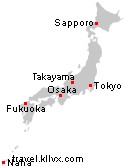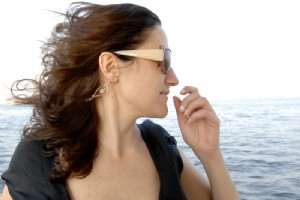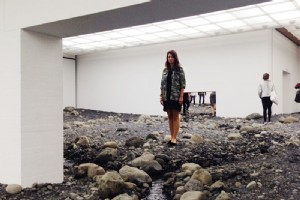cuando viajar

Las siguientes tablas enumeran las temperaturas medias máximas diurnas y mínimas nocturnas y los porcentajes promedio de días soleados y lluviosos para ciudades seleccionadas. Un día lluvioso se define como un día en el que cae al menos 1 mm de lluvia, mientras que un día soleado se define como un día en el que el sol brilla al menos en un 40 por ciento durante el día.
(Fuente:Agencia Meteorológica de Japón)
enero
| Ciudad | Promedio Máximo diurno | Promedio Bajo nocturno | Días de lluvia/nieve
| Días soleados
| ||||||
| Sapporo | -1 C (30 F) | -8 C (18 F) | 60 % | 60 % | 40 % | 35 % | ||||
| Tokio | 10 C (50 F) | 2 C (36 F) | 15 % | 15 % | 75 % | 70 % | ||||
| Takayama | 3 C (37 F) | -5 C (23 F) | 50 % | 40 % | 30 % | 40 % | ||||
| Osaka | 9 C (48 F) | 3 C (37 F) | 20 % | 20 % | 60 % | 55 % | ||||
| Fukuoka | 10 C (50 F) | 3 C (37 F) | 25 % | 30 % | 40 % | 35 % | ||||
| Naha | 19 C (66 F) | 14 C (57 F) | 35 % | 35 % | 35 % | 30 % | ||||
El Año Nuevo es una de las tres principales temporadas de viaje de Japón con una intensa actividad de viajes nacionales e internacionales. Muchas tiendas, restaurantes y atracciones turísticas están cerradas durante al menos un día entre el 29 de diciembre y el 4 de enero. Obtenga más información sobre cómo visitar Japón durante el Año Nuevo.
El resto de enero es un buen momento para visitar Japón, ya que el clima suele ser soleado y seco y los lugares turísticos no están muy concurridos (excepto posiblemente alrededor del Año Nuevo chino). Solo en el norte de Japón ya lo largo de la costa del Mar de Japón hay mucha nieve y las condiciones son buenas para los deportes de invierno. La desventaja de una visita en invierno son los días relativamente cortos (la puesta de sol es alrededor de las 5:00 p. m. en Tokio) y el estado árido de la vegetación.
febrero
| Ciudad | Promedio Máximo diurno | Promedio Bajo nocturno | Días de lluvia/nieve
| Días soleados
| ||||||
| Sapporo | 0 C (32 F) | -7 C (19 F) | 55 % | 60 % | 45 % | 45 % | ||||
| Tokio | 10 C (50 F) | 2 C (36 F) | 15 % | 25 % | 70 % | 65 % | ||||
| Takayama | 4 C (39 F) | -5 C (23 F) | 45 % | 45 % | 45 % | 45 % | ||||
| Osaka | 9 C (48 F) | 3 C (37 F) | 15 % | 25 % | 60 % | 55 % | ||||
| Fukuoka | 11 C (52 F) | 4 C (39 F) | 25 % | 30 % | 55 % | 45 % | ||||
| Naha | 19 C (66 F) | 14 C (57 F) | 35 % | 40 % | 30 % | 35 % | ||||
Al igual que enero, febrero es un buen momento para visitar Japón, ya que el clima suele ser soleado y seco y los lugares turísticos no están muy concurridos (excepto posiblemente alrededor del Año Nuevo chino). La desventaja de una visita en invierno son los días relativamente cortos (la puesta de sol es alrededor de las 5:30 p. m. en Tokio) y el estado árido de la vegetación.
El norte de Japón y la costa del Mar de Japón reciben muchas nevadas. En el apogeo del invierno, febrero suele ser el mejor momento para practicar deportes de invierno y contemplar paisajes invernales, como el hielo a la deriva frente a Hokkaido y las granjas cubiertas de nieve de Shirakawago.
marzo
| Ciudad | Promedio Máximo diurno | Promedio Bajo nocturno | Días de lluvia/nieve
| Días soleados
| ||||||
| Sapporo | 4 C (39 F) | -4 C (25 F) | 50 % | 40 % | 55 % | 50 % | ||||
| Tokio | 13 C (55 F) | 5 C (41 F) | 25 % | 35 % | 60 % | 55 % | ||||
| Takayama | 9 C (48 F) | -2 C (28 F) | 45 % | 45 % | 55 % | 50 % | ||||
| Osaka | 13 C (55 F) | 5 C (41 F) | 30 % | 35 % | 60 % | 55 % | ||||
| Fukuoka | 14 C (57 F) | 6 C (43 F) | 35 % | 35 % | 50 % | 50 % | ||||
| Naha | 21 C (70 F) | 16 C (61 F) | 35 % | 40 % | 40 % | 30 % | ||||
Las plantas y los árboles de floración temprana, como los ciruelos, dan los primeros signos de la primavera, mientras que el clima se vuelve notablemente más templado. Hacia finales de marzo comienza la temporada de los cerezos en flor en ciertas regiones, mientras que en el norte de Japón las condiciones siguen siendo buenas para los deportes de invierno. La actividad de viajes nacionales aumenta en la segunda quincena de marzo debido a las vacaciones escolares de primavera.
abril
| Ciudad | Promedio Máximo diurno | Promedio Bajo nocturno | Días de lluvia/nieve
| Días soleados
| ||||||
| Sapporo | 11 C (52 F) | 3 C (37 F) | 30 % | 30 % | 55 % | 50 % | ||||
| Tokio | 18 C (64 F) | 11 C (52 F) | 35 % | 35 % | 55 % | 55 % | ||||
| Takayama | 17 C (63 F) | 3 C (37 F) | 40 % | 35 % | 55 % | 55 % | ||||
| Osaka | 20 C (68 F) | 11 C (52 F) | 35 % | 30 % | 60 % | 60 % | ||||
| Fukuoka | 19 C (66 F) | 11 C (52 F) | 35 % | 35 % | 55 % | 55 % | ||||
| Naha | 24 C (75 F) | 19 C (66 F) | 40 % | 35 % | 35 % | 45 % | ||||
Además del otoño, abril suele considerarse el mejor momento para visitar Japón porque la temporada de los cerezos en flor tiene lugar en la mayoría de las regiones del país y el clima es agradablemente templado. La actividad de viajes nacionales aumenta a principios de abril debido a las vacaciones escolares de primavera, a finales de abril debido al inicio de la Semana Dorada y durante la mayor parte del resto del mes debido a la temporada de los cerezos en flor.
mayo
| Ciudad | Promedio Máximo diurno | Promedio Bajo nocturno | Días de lluvia/nieve
| Días soleados
| ||||||
| Sapporo | 17 C (63 F) | 8 C (46 F) | 30 % | 30 % | 55 % | 50 % | ||||
| Tokio | 23 C (73 F) | 15 C (59 F) | 30 % | 35 % | 50 % | 50 % | ||||
| Takayama | 22 C (72 F) | 9 C (48 F) | 35 % | 35 % | 55 % | 55 % | ||||
| Osaka | 24 C (75 F) | 15 C (59 F) | 35 % | 30 % | 60 % | 60 % | ||||
| Fukuoka | 24 C (75 F) | 15 C (59 F) | 30 % | 30 % | 55 % | 60 % | ||||
| Naha | 26 C (79 F) | 22 C (72 F) | 30 % | 40 % | 45 % | 40 % | ||||
La Semana Dorada, una de las temporadas de viajes más concurridas de Japón, tiene lugar a fines de abril y principios de mayo y puede ser la causa de varias preocupaciones relacionadas con los viajes.
Sin embargo, el resto de mayo es uno de los mejores momentos para visitar Japón, ya que la vegetación se ha vuelto exuberante, las temperaturas aún son agradables y los lugares turísticos tienden a estar agradablemente desocupados. En Hokkaido, el avance de la primavera se retrasa alrededor de un mes en comparación con Tokio. En el otro extremo del país, en Okinawa, la temporada de lluvias (tsuyu) suele durar desde principios de mayo hasta mediados de junio.
junio
| Ciudad | Promedio Máximo diurno | Promedio Bajo nocturno | Días de lluvia/nieve
| Días soleados
| ||||||
| Sapporo | 21 C (70 F) | 12 C (54 F) | 25 % | 20 % | 55 % | 50 % | ||||
| Tokio | 25 C (77 F) | 19 C (66 F) | 35 % | 45 % | 45 % | 25 % | ||||
| Takayama | 26 C (79 F) | 15 C (59 F) | 30 % | 45 % | 55 % | 30 % | ||||
| Osaka | 27 C (81 F) | 20 C (68 F) | 30 % | 45% | 55% | 35% | ||||
| Fukuoka | 27 C (81 F) | 19 C (66 F) | 25% | 50% | 55% | 35% | ||||
| Naha | 29 C (84 F) | 25 C (77 F) | 45% | 25% | 40% | 60% | ||||
From the beginning of June, the rainy season (tsuyu) visits most parts of Japan except Hokkaido. While it does not rain every day, the weather tends to be overcast and dreary. The duration and intensity of the rainy season can vary quite strongly from year to year.
Hot spring resorts like Hakone and the wooded temple mountain Koyasan are some places that can be quite attractive in rainy weather. Hokkaido is an attractive destination in June as it is least affected by the rainy season. Also, the weather in Okinawa takes a dramatic turn to the better after the end of the rainy season there in late June.
July
| City | Average Daytime High | Average Nighttime Low | Rainy/Snowy Days
| Sunny Days
| ||||||
| Sapporo | 25 C (77 F) | 17 C (63 F) | 25% | 25% | 40% | 45% | ||||
| Tokyo | 29 C (84 F) | 23 C (73 F) | 35% | 30% | 30% | 40% | ||||
| Takayama | 29 C (84 F) | 19 C (66 F) | 55% | 40% | 35% | 50% | ||||
| Osaka | 31 C (88 F) | 24 C (75 F) | 40% | 25% | 45% | 60% | ||||
| Fukuoka | 31 C (88 F) | 24 C (75 F) | 40% | 30% | 40% | 60% | ||||
| Naha | 31 C (88 F) | 26 C (79 F) | 25% | 30% | 80% | 80% | ||||
The rainy season (tsuyu) typically ends in the first half of July. It is hot and humid in most of Japan, and just standing outdoors can make you sweat. The conditions are more comfortable in higher elevations and in Hokkaido, a highly popular destination among outdoor lovers during the summer months.
Many local festivals and fireworks are held. Mount Fuji is opened for climbing. Cormorant fishing can be observed. It is also a very good time of the year for beach holidays in Okinawa. With the summer school holidays from late July through August, domestic travel activity increases considerably.
August
| City | Average Daytime High | Average Nighttime Low | Rainy/Snowy Days
| Sunny Days
| ||||||
| Sapporo | 26 C (79 F) | 19 C (66 F) | 25% | 30% | 50% | 50% | ||||
| Tokyo | 31 C (88 F) | 24 C (75 F) | 25% | 25% | 55% | 50% | ||||
| Takayama | 31 C (88 F) | 20 C (68 F) | 35% | 35% | 60% | 60% | ||||
| Osaka | 33 C (91 F) | 25 C (77 F) | 20% | 25% | 70% | 70% | ||||
| Fukuoka | 32 C (90 F) | 25 C (77 F) | 25% | 30% | 65% | 60% | ||||
| Naha | 31 C (88 F) | 26 C (79 F) | 40% | 35% | 70% | 75% | ||||
August is hot and humid in most of Japan. The conditions are more comfortable in higher elevations and in Hokkaido, a highly popular destination among outdoor lovers during the summer months. Many local festivals and fireworks are held in August. Travel activity is high during the entire month due to summer school holidays, but is especially intensive during the Obon week in mid August.
September
| City | Average Daytime High | Average Nighttime Low | Rainy/Snowy Days
| Sunny Days
| ||||||
| Sapporo | 22 C (72 F) | 14 C (57 F) | 30% | 35% | 50% | 55% | ||||
| Tokyo | 27 C (81 F) | 21 C (70 F) | 35% | 40% | 40% | 35% | ||||
| Takayama | 26 C (79 F) | 16 C (61 F) | 40% | 40% | 45% | 45% | ||||
| Osaka | 29 C (84 F) | 21 C (70 F) | 30% | 35% | 60% | 50% | ||||
| Fukuoka | 28 C (82 F) | 21 C (70 F) | 35% | 30% | 55% | 55% | ||||
| Naha | 30 C (86 F) | 25 C (77 F) | 35% | 40% | 70% | 65% | ||||
The typhoon season reaches its peak in August and September. Typhoons usually hit the coasts of Okinawa, Kyushu and Shikoku and cause strong rain and wind in wide parts or all of Japan for about two days. Luckily, typhoons are often followed by perfectly clear weather. The weather in September can still be quite hot and humid, but the crowds of August have mostly disappeared.
October
| City | Average Daytime High | Average Nighttime Low | Rainy/Snowy Days
| Sunny Days
| ||||||
| Sapporo | 16 C (62 F) | 7 C (45 F) | 35% | 40% | 60% | 50% | ||||
| Tokyo | 22 C (72 F) | 15 C (59 F) | 35% | 30% | 40% | 55% | ||||
| Takayama | 20 C (68 F) | 9 C (48 F) | 35% | 30% | 45% | 55% | ||||
| Osaka | 23 C (73 F) | 15 C (59 F) | 30% | 25% | 55% | 65% | ||||
| Fukuoka | 23 C (73 F) | 15 C (59 F) | 20% | 20% | 60% | 65% | ||||
| Naha | 28 C (82 F) | 23 C (73 F) | 25% | 25% | 65% | 65% | ||||
October is one of the most pleasant months for traveling in Japan as the weather remains warm, but is not hot and humid anymore. Trees begin turning colors in the northern regions and higher elevations.
November
| City | Average Daytime High | Average Nighttime Low | Rainy/Snowy Days
| Sunny Days
| ||||||
| Sapporo | 8 C (46 F) | 1 C (34 F) | 45% | 45% | 40% | 35% | ||||
| Tokyo | 17 C (63 F) | 10 C (50 F) | 25% | 20% | 55% | 60% | ||||
| Takayama | 13 C (55 F) | 2 C (36 F) | 35% | 35% | 45% | 40% | ||||
| Osaka | 17 C (63 F) | 10 C (50 F) | 20% | 20% | 60% | 60% | ||||
| Fukuoka | 18 C (64 F) | 10 C (50 F) | 30% | 25% | 55% | 50% | ||||
| Naha | 24 C (75 F) | 20 C (68 F) | 25% | 30% | 55% | 45% | ||||
November is one of the best times to visit Japan, as the weather is relatively dry and mild, and the autumn colors are spectacular in many parts of the country. Travel activity tends to be low except around popular autumn leaf spots.
December
| City | Average Daytime High | Average Nighttime Low | Rainy/Snowy Days
| Sunny Days
| ||||||
| Sapporo | 2 C (36 F) | -4 C (25 F) | 50% | 50% | 35% | 35% | ||||
| Tokyo | 12 C (54 F) | 5 C (41 F) | 15% | 10% | 65% | 75% | ||||
| Takayama | 6 C (43 F) | -2 C (28 F) | 40% | 40% | 35% | 35% | ||||
| Osaka | 12 C (54 F) | 5 C (41 F) | 20% | 15% | 65% | 65% | ||||
| Fukuoka | 13 C (55 F) | 5 C (41 F) | 30% | 25% | 45% | 45% | ||||
| Naha | 21 C (70 F) | 16 C (61 F) | 25% | 30% | 45% | 40% | ||||
December is a good month for traveling thanks to generally dry weather conditions. Domestic travel activity remains low during the first half of December until the beginning of winter school holidays around December 23. The downsides of a visit in winter are the relatively short days (sunset is around 4:30pm in Tokyo) and the barren state of the vegetation. From around December 29 some tourist attractions close down for the New Year holidays. The ski season starts in December.






